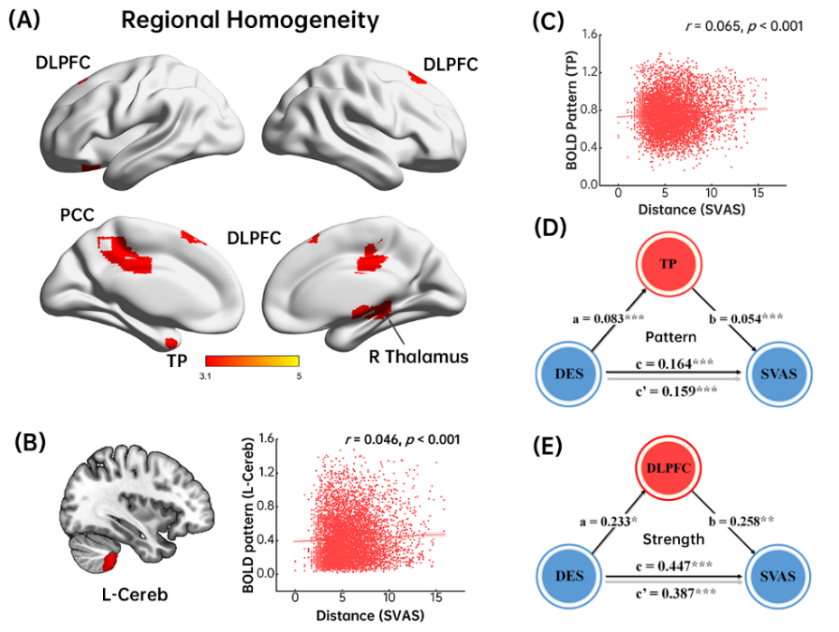Research led by Professor Wang Qiang from the Faculty of Psychology at Tianjin Normal University (TNU) has been published in NeuroImage, a leading international neuroimaging journal. The paper, titled "Neuroanatomical and functional substrates of the short video addiction and its association with brain transcriptomic and cellular architecture," identifies the neural mechanisms underlying Short Video Addiction (SVA). Graduate student Gao Yuanyuan and Dr. Hu Ying are co-first authors, with Professor Wang Qiang and Professor He Qinghua from Southwest University serving as co-corresponding authors.
Short Video Addiction (SVA) has emerged as a typical manifestation of digital behavioral addiction in recent years, characterized by compulsive and uncontrollable use of short video platforms. Excessive engagement with short videos not only impacts physical health, such as sleep and vision, but is also closely associated with cognitive deficits (e.g., attention, learning, and memory impairments) and emotional issues (e.g., depression, anxiety, and stress). However, existing research has largely focused on behavioral aspects, leaving a gap in systematic evidence regarding the brain structure and molecular mechanisms underlying SVA. This study collected behavioral and neuroimaging data from 111 participants and employed both traditional univariate analysis and inter-subject representational similarity analysis (IS-RSA), combined with brain transcriptomic methods, to systematically explore the neuroanatomical, functional, and genetic expression bases of SVA. The results revealed that gray matter volume in the orbitofrontal cortex and bilateral cerebellum was significantly correlated with SVA. Specifically, gray matter volume in the left cerebellum moderated the relationship between trait envy and SVA. The dorsolateral prefrontal cortex (DLPFC), posterior cingulate cortex (PCC), cerebellum, and temporal pole exhibited high regional homogeneity (ReHo). Among these, the activity intensity of the DLPFC and the activity pattern of the temporal pole played moderating roles in the relationship between trait envy and SVA. These findings suggest that brain regions involved in reward processing, executive inhibition, self-awareness, and social cognition are critical neural substrates of SVA.

Brain transcriptomic analysis identified 521 genes significantly associated with SVA, enriched in multiple specific functional pathways. Spatiotemporal expression analysis revealed that cerebellar-related genes were highly expressed during early fetal, neonatal, and infant stages, as well as from childhood to adolescence, indicating that SVA may be closely linked to molecular mechanisms in early neurodevelopment. As the first study to integrate behavioral, neuroimaging, and transcriptomic evidence, it provides crucial insights for diagnosing and intervening in this emerging behavioral disorder.
By He Jierui











